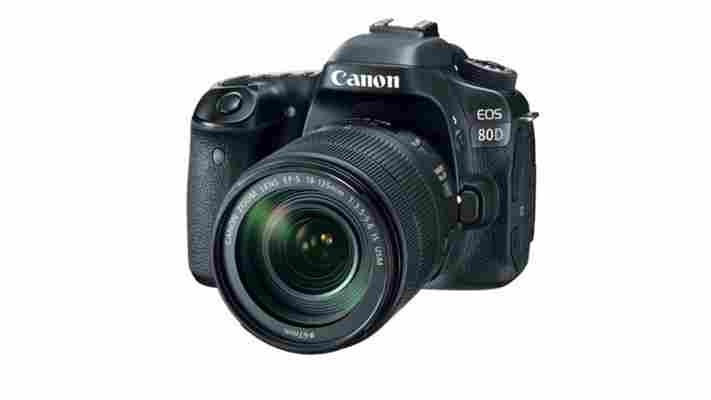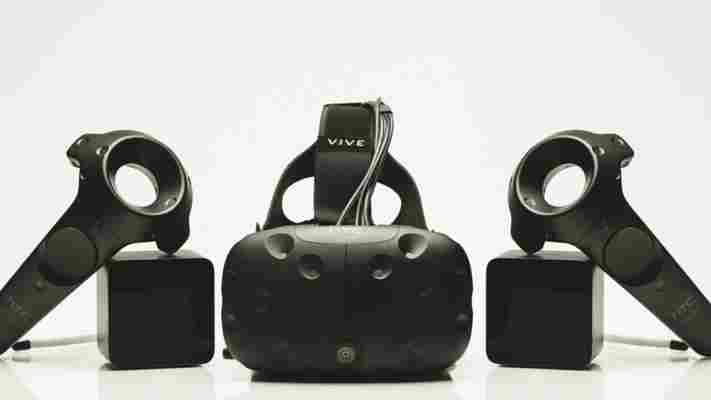The Canon 80D bumps the specs, but it’s still as boring as ever
Photographers love the Canon 70D for a reason: it’s a solid camera that shoots great footage at a pretty good price. The updated version of that trusty old friend is out today, the 80D, with Canon’s take on what an updated camera should look like.

Let’s get the statistics out of the way first: the 80D sports a 24.2 megapixel CMOS sensor (up from 20.2 megapixels), DIGIC 6 processor, 45 point AF system and 7 fps burst shooting rate. It’s also gained a headphone and microphone jack.
The company added WiFi and NFC capability to the camera for quickly downloading your photos. There’s a new all-purpose lens to go with it, the EF-S 18-135mm f/3.5-5.6 IS USM, along with a Power Zoom Adapter PZ-E1 that can control zoom smoothly over Wi-Fi, which sounds pretty appealing for videographers.
Basically, this is the ultimate camera for those that want to get serious about video, but there’s a few things notably missing.
There’s no 4K capability — the 80D is still stubbornly stuck with HD shooting — and no sense of additional features such as a built-in timelapse mode, zebra overlay for video focus or any of the advanced features Magic Lantern has been hacking on to the camera via custom firmware for years .
More than anything, the 80D shows how utterly pedestrian Canon’s devices continue to be. While other camera makers are swiftly out-maneuvering the old-school DSLR manufacturers with compact mirrorless alternatives with just as much punch , the company is putting out only incremental improvements.
That might ultimately be what hardcore videographers want, because change is difficult and expensive, so sticking with the same system likely helps Canon a lot, but it risks fading into irrelevance.
The Canon 80D will be available in April starting at $1,199.00 for the body, or $1,799.00 with the new lens.
➤ Canon 80D
Microsoft’s multi-talented Surface Book available to pre-order in new markets tomorrow
When Microsoft lifted the lid on its Surface Book in October last year, it took many people by surprise , primarily by being a Windows-based device that people might actually want to own, rather than buy out of necessity.

However, since its launch, it hasn’t been offered in very many markets, but that’s set to change from tomorrow with it going up for pre-order in the UK, priced from £1,299 (or $1,499 in the US).
Clearly, that’s a whole bunch of money for a laptop/tablet thing, but its versatility in different modes, strong battery life and stunning display helped it sail through our review to be named Windows’ first flagship laptop.
It’s not just UK dwellers that will get the chance to hand over cash for a Surface Book from tomorrow though; the device is being rolled out in Austria, China, France, Germany, Hong Kong, New Zealand and Switzerland too. It’s also set to go on sale in Japan, but not quite yet.
➤ Xbox has Best Holiday Ever; Surface Book Coming Soon to 10 More Markets [Windows Blog]
HTC just launched the Vive Pre, an upgraded VR headset for developers
HTC’s Vive VR headset introduced last year might not have even made it on sale yet, following a delay at the end of 2015 until April of this year , but that hasn’t stopped the company from unveiling its newest model at CES in Las Vegas today.

The announcement marks the second-generation of the developer units, 7,000 of which will be made available before general release of the retail devices in a few months, and brings an all-new design to the device, HTC says.
“Each and every component has been redesigned from the ground up to provide better comfort, ergonomics, and performance. With milestone improvements in both visuals and versatility, Vive Pre creates a world without limits.”
The headset is smaller this time around, with a new strap design for better balance and a better display system that results in brighter, clearer images, according to HTC.
On the inside of the headset, there’s now interchangeable foam inserts to allow it to be more easily adjusted.
Perhaps most notably, however, is the new front-facing camera, which HTC says will let you blend reality with VR, by bringing real physical elements into the virtual space, like drinking a drink, for example.
Rounding off the changes are upgrades for the control system, which is now said to be smoother and longer-lasting thanks to integrated batteries.
HTC says the Vive base stations are also quieter than previously, too.
